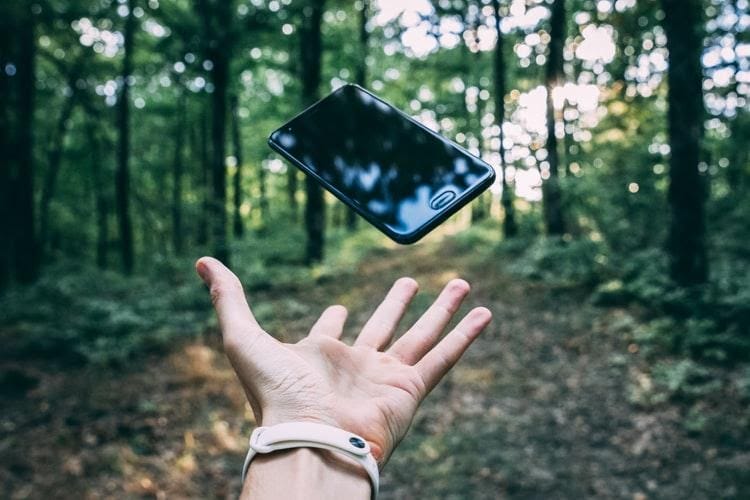Have you noticed how people just flip their phones during the meetings and it stops ringing immediately? One can do it by clicking on Settings -> Gestures and enabling the ‘Rotate to Mute’ feature. There are a lot of other Android device hacks and tricks that can make you look high-tech and impress your peers.
Here are some of the best Android tricks to try this year:
#1. What do you do when you lose your smartphone or tablet?

Dive in the blankets to look for it? Turn around the room to find it at the earliest? Cool dudes and gals don’t do that. They are always in control. They go to Google Play and install Google Find My Device in each of the smart devices they own. When they lost their phone, they just play sound on the lost device and it starts ringing – literally calling you to it. It works even if your phone is in a ‘silent’ or ‘mute’ setting.
#2. How to root or unroot your device in a single click?
Framaroot is a one-click method to root several Android devices that are on its compatibility list. To accomplish it:
- Download the Framaroot APK onto your computer.
- Now, connect your PC to your Android device using the USB cable.
- Copy the APK over the root of your SD card.
- Now, disconnect your Android phone.
- Open Menu -> Settings -> Security on your Android device and enable ‘Unknown Sources’.
- Open File Manager and install the app (Framaroot) from your SD card.
- In the app, Install SuperSU and install the appropriate Exploit and let the app do its work.
This app quickly roots the device. You can also unroot it whenever you want.
Warnings:
- If you root your device, your warranty will turn void. To reinstate the warranty, you can unroot it.
- Before you install the Framaroot app, make sure your device is compatible with it.
Rooting your device allows you access to the ‘root’ directories of your phone and experience its full potential. It allows you to:
- back up everything, including system apps and their data, using tools like Titanium Backup,
- block ads across all apps and browsers by using apps like AdFree, AdAware, and AdBlock Plus,
- install apps not available for your region or incompatible with your device,
- speed up your phone and improve its battery life by using apps like SetCPU and Greenify,
- use Tasker to experience automation at its best (such as play a particular song when you reach your parking lot in the evening), and
- uninstall pre-installed apps you do not use but cannot remove otherwise. It can help you free up space and improve the performance of your phone.
#3. How to use Linux on your Android phone easily?
Linux is free to use. Free and Open Source Software (FOSS) available on Linux suit the needs of both amateurs and professionals. The software available for free on Linux includes desktop publishing, audio, and video editing, and photo editing. The developer community loves as they can freely view and modify the source code of the FOSS software and customize them endlessly.
Normally, installing Linux on an Android phone is a tedious task and requires you to root your device. But you can install a Debian Noroot app and install Linux distribution Debian on your phone easily. In this way, you can use LibreOffice (equivalent to Microsoft Office), GIMP (image editor), and other FOSS software using the Advanced Package Tool (APT).
#4. How to improve the quality of your Android phone camera?

The camera is one of the most beloved features of an Android phone. But did you know that some very simple tricks can help you take better selfies or click better pictures from your phone:
- Wipe dust and fingerprint off the lens to avoid blurry pictures. Use the cleaning fluid, distilled water, or isopropyl alcohol. Spray it on the lens-cleaning cloth or microfiber and wipe the lens gently. Other materials (including paper towels) may scratch the surface of the lens. Use the dry part of the cloth to dry the lens.
- To click clear and sharp pictures, you need to keep your hand stable. If you have shaky hands, use a tripod or a monopod (selfie stick). Or rest your elbows on a solid stable surface to take the picture.
- Wait for your camera to autofocus and adjust exposure before you click the picture. Check the viewfinder (screen) to see if the picture is clear and sharp or not, and the face detection feature has highlighted faces properly.
- In the Settings, check System Apps to find Camera and change the Resolution, Picture Quality, or Picture Size to the best setting available. Avoid using the zoom feature on the camera as it may result in grainy and highly pixelated pictures.
- Many free camera apps can help you use the best pictures your phone’s hardware is capable of. These include an Open Camera, Camera MX, and HD Camera.
#5. How to Use Your Phone to Study On the Go (Or At Home)?

Android is a supercomputer in your palm. It contains books, videos, audiobooks, and podcasts by highly qualified teachers and trainers worldwide. Smart youth of today knows that it can help them upgrade themselves and improve their life paths anywhere, anytime. Some of the best educational apps that you can read, listen, and watch while you are traveling or lounging around in your living room are:
- Deepstash to get daily news feed on topics you like and summarize them in 100 words or less.
- Duolingo and Memrise to learn new languages.
- Quora and InstaSolv to ask questions and find answers on different topics.
- Ted Talks to check out the content on your favorite topics,
- Udemy Online Courses, Khan Academy, Coursera and other such apps to do online courses.
- Wikipedia to know about everything. It’s an encyclopedia though it is crowd-sourced.
- YouTube to watch videos on virtually anything.
Do you remember about ‘Gestures’ we mentioned in the first paragraph? You can use it to do a lot more. You can open the camera by drawing a circle on the screen or open your favorite apps using other suggested gestures. All phones that run the Android 10 operating system allow you to play with these gestures and have fun.
